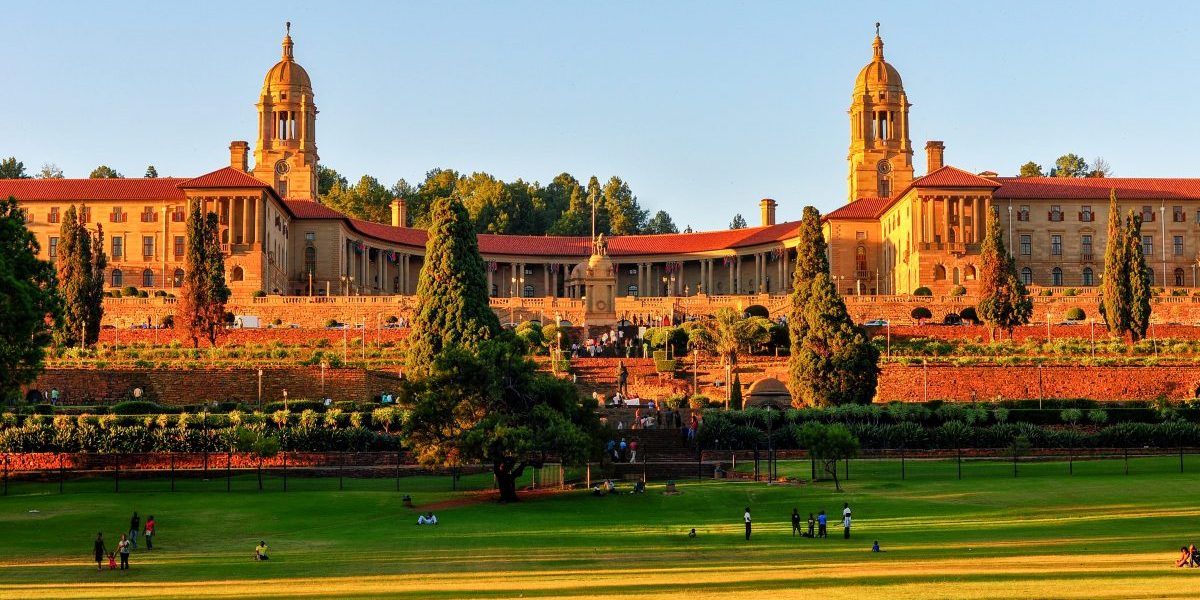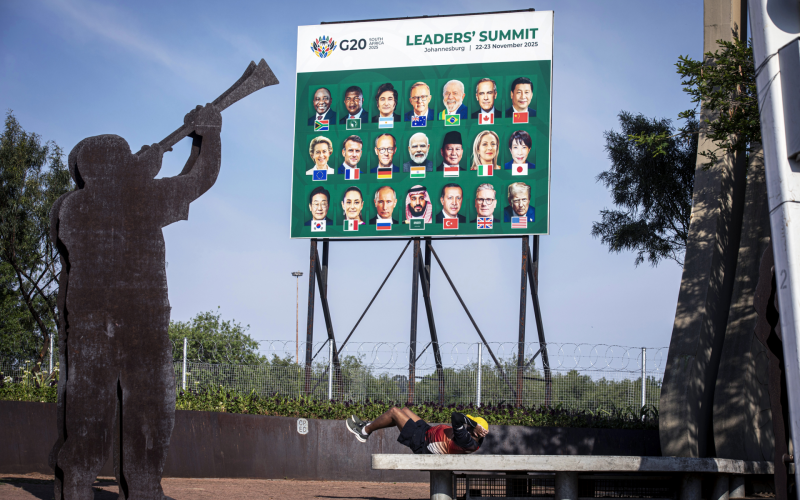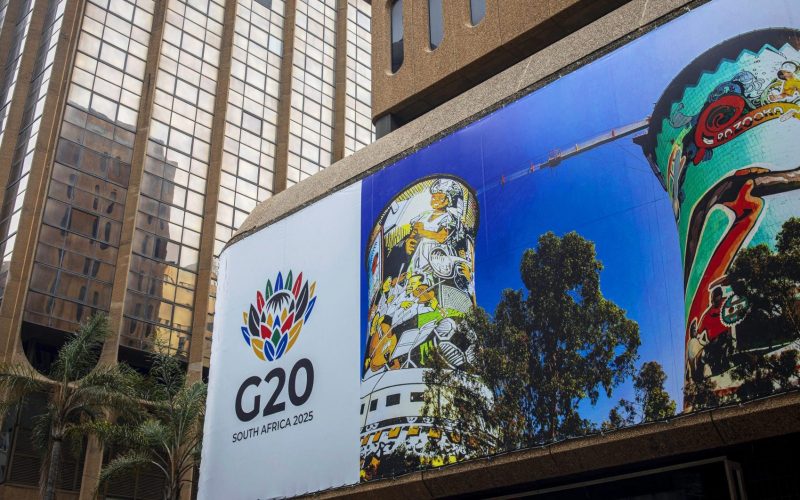Recommendations:
- South Africa requires a centralised National Strategy and Development Council (NSDC) that sets overall national strategy and functions as a strong executive apparatus at the presidential centre of governance.
- The current clusters should be transformed into directorates with multiparty advisory boards coordinated by the NSDC to help strengthen strategic vision for effective dissemination and implementation throughout all departments.
- The International Relations Trade and Security (IRTS) cabinet cluster specifically should be restructured as a directorate that benefits from stronger institutionalised support, and an adjunct and independent Council on International Relations and Cooperation. Operating under the NSDC, the IRTS could achieve the following:
- enable critical cross-sectional or cross-departmental thinking
- limit autonomous and uncoordinated decision-making of ministers;
- enable strategically pragmatic clustering of ministries and leadership;
- ensure continuity in policy making that is not subject to legacy-whims of individuals; and
- facilitate a strategic approach to foreign as well as domestic policy-making.
Introduction
This policy brief is intended to be illustrative of how South African governance and statecraft can be strengthened. Overcoming siloed bureaucratic and institutional challenges in South African foreign policy-making could be achieved through an institutionalisedtype council that serves as a model that builds towards an overarching mechanism for strategic implementation. Hence, the creation of a National Strategy and Development Council (NSDC) located in the presidency.
South Africa’s foreign policy direction is at the discretion of the president who determines the overall national strategic agenda. However, such responsibility primarily lies with the Minister of International Relations and Cooperation, further supported by the bureaucratic functions of the Department of International Relations and Cooperation (DIRCO). The International Relations Trade and Security (IRTS) cabinet cluster grouping of strategic departments provides ancillary support. These include: the Department of Trade, Industry and Competition, the State Security Agency, and the South African National Defence Force (SANDF) to name a few, as well as sector departments, such as the Department of Mineral Resources and Energy, the Department of Transport, and the Department Environment, Forestry and Fisheries. The Portfolio Committee on International Relations and Cooperation as well as civil society-related state structures such as the now defunct South African Council on International Relations (SACOIR), the Association of Former Ambassadors, and other non-governmental organisations (NGOs), think tanks and academic institutions also provide support.
As a semi-developed economy (with a significant ‘first world’ sector of sophisticated urbanindustrial, manufacturing and financial infrastructure amid a majority underdeveloped socio-economic sector of widespread poverty), foreign policy should be integrated within a much broader multi-sectoral national security and developmental strategic framework. This can be achieved through the proposed NSDC in the presidency, which should include an IRTS directorate that, in turn, is complemented by a revived but independent SACOIRlike council.
This briefing explores some of the thinking behind the structuring of national strategy pertaining to foreign policy and national security. It ultimately advocates for an institutionalised approach that may implement state macro-economic planning from a foreign policy perspective (including economic-cum-developmental diplomacy) that would more effectively complement the developmental state strategy.
Party-state vs. developmental state: A short history of presidential legacy initiatives
Each presidency post-apartheid has contributed to the infrastructure intended to support dynamic policy-making: President Nelson Mandela’s focus on overall policy reform through a Government of National Unity; President Thabo Mbeki’s Policy Coordination and Advisory Unit (PCAS) and National Security Council (NSC); President Jacob Zuma’s National Planning Commission and drafting of the National Development Plan (NDP); and now, President Cyril Ramaphosa’s revival of the PCAS and the NSC while retaining the NDP and planning commission. Looking to the future, will this architecture go through yet more alterations? Or is there a prospect for greater institutionalised continuity?
Despite the fact that these former presidents belong to the same governing party, there has been about as little continuity in how government is organised and coordinated as if their successive administrations reflected different political parties coming into power, save for the Mandela to Mbeki transition. The intra-governing party dynamics animating this history fall outside the terms of reference of this analysis but bear serious pondering in discerning the future of South African state stability.
Such reinventions of the presidency with successive turnovers may be reflective of the challenges a hybrid party-state poses to developmental state construction. Indeed, power tends to be vested more in an individual person doubling as president of the country as well as party president rather than in the presidency as an apex institution of the executive branch of government. In the case of foreign affairs, the resulting lack of continuity and clarity regarding policies, priorities and national strategy have allowed ministers to determine their own interpretations of sector specific ‘foreign policies’ in various departmental portfolios. Departments have therefore been left to function as bureaucratic silos, generating inter-departmental tensions, widening the gap between policy reality and policy aspirations, and hindering policy implementation.
This year, this situation has coincided with the devastation of the novel coronavirus, accentuating the need for a more robust centralisation of institutional presidential power and its architectural continuity. This is fundamental to a disciplined developmental state informed by the ‘Asian Tiger’ experience. However, the aim should be for an authoritative rather than an authoritarian state. Centralisation of power should be vested in a national strategic policy planning, vetting and implementation process cutting across ministries and departments in the defining of a genuinely developmental state in both domestic and foreign policy terms.
The issue of continuity is critical, irrespective of the party or intra-party coalition in power or, as could occur in the future, a multiparty coalition assuming the reins in the Union Buildings. As such, a prospective NSDC would have to be legislated by parliament and possibly constitutionally entrenched. Thus, legislatively institutionalised and/or constitutionally mandated, incoming administrations would not, on a parochial political whim, be able to dismantle the critical policy formulation and decision-making apparatus of an institutionalised presidency. While this might still not guarantee full continuity, it should, at least, guarantee continuity of process and the presidency’s apex role in relation to cabinet.
National Security Council and SACOIR revisited
In centralising greater domestic as well as foreign policy and national security coherence in statecraft execution, the cluster system would transform into directorates within the presidency’s NSDC. However, in tandem with the IRTS directorate, there would remain a special role for the NSC given its international security dimension that would require close interaction with DIRCO. The NSC could remain a ‘council’ or become a ’commission’ adjunct to the NSDC inclusive of the National Intelligence Co-ordinating Committee, the National Intelligence Agency, the South African Secret Service, the SANDF Intelligence Division, the Crime Intelligence Division of the South African Police Service, the Parliamentary Standing Portfolio Committee on Intelligence, and the National Security Adviser to the President, as well as think tanks and civil society. The NSC as an adjunct to the NSDC would sit at the apex of the security function within the NSDC International Relations, Trade and Security cluster directorate. This would reflect the way similar clusters should be redefined as ‘directorates’ within an NSDC as well. Another adjunct body could be a ‘council of economic advisers’ as a complement to the National Treasury in navigating the economic and financial risk landscape.
Another ‘adjunct’ issue in terms of the foreign policy dimension of national strategy should be to revisit the issue of SACOIR.
SACOIR was intended to be independent along the lines of a Council on Foreign Relations, yet was part of government. It comprised academia, business, civil society, labour and NGOs; was approved by the IRTS cluster and cabinet; and was required to operate under DIRCO, where the department was responsible for technical and logistical support. Its members were appointed for a three-year period and they met with the minister on a bi-annual basis. Its purpose was to provide the department with policy-relevant advice and public engagement. It came into being at the request of former minister of International Relations and Cooperation, Maite Nkoana-Mashabane.1Parliamentary Monitoring Group, ‘South African Council on International Relations (SACOIR); SA Association of Former Ambassadors: DIRCO briefing’, March 16, 2016, https://pmg.org.za/committee-meeting/22248/.
Such an initiative that provides an institutionalised role for non-governmental actors is important; however, it should also interact with the wider IRTS cluster and their complementing non-governmental support structures.
In the recently (4 June 2020) gazetted Foreign Service Act of 2019, DIRCO is the official custodian of South African foreign policy; is responsible for foreign policy coordination, administration, staffing and management of foreign missions; is responsible for rendering consular services; and must conduct communications.2Government of South Africa, Foreign Service Act, Act 26 of 2019, (Pretoria: 2020).This implies that DIRCO and the minister must take the lead in the cluster group on inter-governmental affairs, which may provide an opportune moment where an expanded institution such as SACOIR can play a unique role. The emphasis for career diplomats to be better equipped and engaged through training,3Government of South Africa, Foreign Service Act.for example, allows for greater interaction with an institution such as SACOIR.
Institutionalising a non-governmental Council on International Relations and Cooperation
First, a decision would have to be made on whether a SACOIR successor should remain within or outside government. The preference is that it be outside government. A Council on International Relations and Cooperation (CIRC) of non-governmental experts would engage on matters of foreign policy, economic diplomacy and international as well as domestic security matters. They would provide synergised information, advice and training to the IRTS departments through the cluster directorate in the presidency. Similar to SACOIR, the council could be located within DIRCO’s umbrella but as a non-governmental entity with private sector as well as NGO representation. To be broadly credible, it would have to be independent of government in adding value to a presidential-based NSDC comprising multi-clustered directorates. CIRC could function as a ‘think tank of think tanks’, with policy research at its core as it interacts with all society stakeholders.
This independent council would provide a holistic view on policy matters, especially in the case of inter-ministerial or departmental overlaps, thereby avoiding unnecessary conflicts. The council might also avail itself to parliamentary portfolio committees to provide information regarding active situations in the international arena and where South Africa locates itself therein. But, as a structure external to government, it would interact with existing IRTS think tanks in stimulating foreign policy/national security and dialogues throughout society as a whole so that all society’s stakeholders develop a vested interest in South Africa’s statecraft.
However, a CIRC, whether located in or outside government, would have to overcome a number of challenges based on the SACOIR experience:
- It would have to have a clear mandate on the extent of its advisory role to bridge the interests of different stakeholders within and outside government.
- If located within government, who would it answer to or who would have authority over the council? In terms of the Foreign Service Act, the council could answer to DIRCO but ultimately the purpose of the council is to liaise with the cluster group sharing the information that has been commissioned. Within a proposed NSDC format, CIRC would liaise with the IRTS directorate within the presidency, perhaps with DIRCO as the point agency of reference.
- Council membership and expertise may be a contested issue although priority status should be given to IRTS think tanks. Membership and organisational terms of reference of such a council therefore need clarification. Indeed, should reaching a consensus on issues be part of its mandate or should it focus on ongoing dialogue and policy research within an IRTS-think tanking ecosystem? Rather, CIRC should provide strategic options, not definitively prescriptive conclusions on issues likely to be in dynamic flux.
- Multiparty diversity and oversight could be built into the council’s governance; however, this cannot be guaranteed and so existing channels of oversight such as parliamentary portfolio committees should consider engaging in this role without engaging on policy from a common national strategy perspective.
- Access to funding will continue to be an issue in a pandemic-centric reality and nongovernmental actors will be required to source funds. As such, a prospective CIRC successor to SACOIR ought to be conceived as a public-private partnership with corporate funding in the mix. Moreover, transforming the cluster system into directorates within the presidency might offset the downsizing and reconfiguration of government by promoting the externalisation of research capacity to South African think tanks via the cluster directorates. In doing so, the country’s knowledge sector would also become less donor dependent while retaining operational independence from government in generating long-term policy-related research.
- A South African CIRC could be legislated as a statutory body operating as a publicprivate partnership as a means of ensuring independence. This might address the governmental/non-governmental dilemma of its role and identity. Such a body might also be selectively augmented below the national level with companion councils in major metropolitan cities such as: a Johannesburg Council on International Relations and Cooperation; an eThekwini (Durban) Council on International Relations and Cooperation; and a Cape Town Council on International Relations and Cooperation. These provincial councils may encourage a more inclusive and informed South African foreign policy constituency.
Conclusion
The foregoing is purely illustrative of how foreign policy and national security organs can be restructured for the more efficient execution of South African statecraft. However, such a council would have to withstand the changes within government. As such, it would have to be legislated into existence by an act of parliament. This would provide opportunity for robust debate within and outside the governing party with multiparty input in what, in essence, would be a defining moment in coming to terms with the post-apartheid South African nation-building and developmental project.
Acknowledgement
SAIIA would like to thank the Swedish International Development Cooperation Agency (SIDA) for their generous support of this work.
Francis Kornegay, Jr. and Arina Muresan have co-authored a chapter in the forthcoming edited volume on ‘Values, Interests and Power: South Africa’s foreign policy in uncertain times’, edited by Professor Daniel D Bradlow and Elizabeth Sidiropoulos and published by Pretoria University Law Press.









